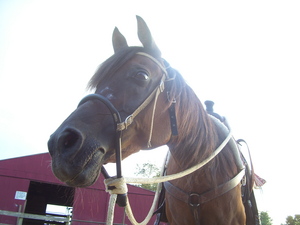One of the most beautiful and most tasty fruits in the entire world would be the strawberry. This red sweet berry is loved and eaten throughout the entire planet. As like most fruits, strawberries taste much better when they are homegrown than they do store-bought. The reason being that many of the fruits and vegetables that are sold in stores are more than likely to be genetically engineered and dusted with pesticides. Organically grown fruits have a much better quality and taste than those that are grown artificially.
Starting a strawberry garden can be a great idea if you are planning on sprucing up your garden this spring. You will have the opportunity to go out and pick fresh ripe strawberries from your own yard to add to your morning cereal or just for a tasty snack.
Strawberries are very easy to grow and unlike most plants, strawberries can yield crop just months after planting.
Let’s get started!!! The first step to starting your strawberry plant is to pick up bare-root strawberries as soon as they are available. You can usually purchases these in most areas as late as April and in a 4-inch container.
Strawberries can live almost anywhere. There are actually three ways which you can plant your strawberries. These three include are in the ground, a hanging plant, or a strawberry pot.
You can purchase your strawberry plants from most nurseries. You can also mail order or purchase them over the Internet. You want to make sure that the mail order is very reliable and reputable. You want to avoid planting strawberries from old plants because these types of plants are more than likely disease infested. If you can’t plant your strawberries right away after they arrive, than you should place them in a plastic bag and place a moist material, like wood shaving or peat moss, around the roots of the plant. You should then store them in the refrigerator. You can safely store them there for up to two weeks. Here is a list of websites where you can order strawberry plants and plugs:
http://www.daisyfarms.net/
http://www.noursefarms.com/
http://www.strawberryplants.com/
Before you begin planting your strawberries it is very important that you know what types of strawberries you will want to harvest. There are different types of strawberries and one of the most common types of strawberries would be the June bearing plant or also known as the Spring-bearing. June bearing plants produce flowers, fruit, and runners.
Different places require different times of the year to start planting your strawberries. If you live in Southern California you should begin planting in April, and begin in June in the Northwest and mountain states. One-crop habit is unchanging during in the cold-winter climates. However, in mild California climates, June bearers have a one-crop habit that is less pronounced, and many types extend their harvest over month as like everbearers. June bearers will produce the best-quality fruits, however, their harvest comes all at once. So the best way to keep all of your strawberries fresh would be to either freeze or juice them. Plant them in February (when they’re easiest to find in a nursery) or in the fall, which ever way you desire, you will see your crops coming in after the winter.
Ever bearing strawberries are also common like June bearing plants. These strawberries produce three terms of flowers and fruit during the spring, and the biggest crops come in late summer and fall months. Unlike June bearing plants, Ever bearers do not produce many runners.
Day neutral strawberries are the last type of strawberry that I am going to talk about. This is the newest type of strawberry. This strawberry will produce its’ fruit throughout the season. These strawberries do not produce very many runners. Day neutral strawberries along with Ever bearing are great to plant if you have a limited amount of space. They have the ability to be grown in barrels, pyramids, and terraced beds.
Once you have decided which type of strawberry plant you would like to grow the next step would be getting ready for the planting process.
Site Preparation and Selection
Strawberries need lots of sunlight in order to produce the best crop, however, the truth is that you can get a harvestable crop with only six hours of direct sunlight a day. If you increase the amount of sunlight your plants get per day than you will have better results and a better quality of berries. So the best site would be the one with the most sunlight available.
Strawberries need lots of water. They will not be able to survive a drought or standing water. You want to make sure that in the site that you select, the soil is well drained. You can add an organic material if the soil does not hold in the moisture very well.
You should also reconsider planting your strawberries by large trees because the strawberries will have to compete with the tree for soil moisture. You want to find a good site that will be easy to water even during a drought.
You want to make sure that the pH of the soil is correct. A pH of 5.3-6.5 is most advantageous, however, strawberries will grow with a soil pH of 5.0-7.0. You can get a test kit at most garden supply stores. If you do decide on having a larger sized garden, than the best result would be to have a professional soil test done. Most county agricultural extension agents have soil test available.
You also want to make sure that your site is free from grubs, weeds, and soil-borne diseases. Most weeds such as perennial weeds will compete with your strawberries for moisture. You should also tilt and cultivate areas where sod has been grown because this will eliminate unwanted grass that will also compete with your strawberries for moisture.
You do not want to plant your strawberries by eggplant, peppers, potatoes, and tomatoes that have grown in the site within the past three years, because your strawberries are very susceptible to Verticillium Wilt and most of these vegetables have the tendencies carry this disease. If you have no other choice but to plant where these vegetables have grown, than you should choose a resistant type of strawberry such as the Allstar, Earliglow, Settler, Tristar, or Tribute.
The strawberry type will determine the planting design. June-bearing strawberries should be planted 18-24 inches apart in straight rows spaced up to 4 feet apart. If you plant these correctly than runners will eventually develop and root without restraint and will then form a matted row of plants up to 2 feet wide.
Ever bearing and day neutral plants are usually planted in beds of two or three straight rows that are 1-foot apart. The plants should be spaced 1-foot apart within the rows. You should allow a 2-foot-wide path between each bed. You will want to remove all runners that develop from these plants so that your plants can be maintained as large, single plants.
T
he best time to plant your strawberries is in the early spring, late March or April. Once you remove your plants from storage (i.e plastic bag in refrigerator) you need to trim off any old leaves that are present. You should then place the roots in water for an hour, and then plant immediately after. You want to place each plant into the ground so that the crown of the plant is even with the surface of the soil.
When you are done planting the strawberries you want to immediately water the plants well and apply a starter fertilizer solution. The fertilizer will help to support the plant’s growth. You can prepare a fertilizer solution by adding 2 or 3 tablespoons of complete, water-soluble fertilizer, such as 5-10-5 or 10-10-10, to one gallon of water. You can then apply 1 or 2 cups of the solution to each plant.
You will want to remove any and all blossoms from June bearing plants during the first season of growing. If the berries are able to develop than they will reduce the plant’s growth, runner production, and the next year’s crop. You want to check the plants at least once a week to remove the blossoms by either pinching or cutting them. The flowering should stop by the middle of summer.
As for Ever bearing and day neutral plants, you should remove the flowers until the end of June and once again after the date. You should allow the flowers to remain so that the fruit will set for the summer and fall harvest.
Growing strawberries in a strawberry pot is also a great way to produce this tasty berry. Strawberry pots were designed to hold one to three plants in the top so that when the runners developed their offspring could be rooted in the pockets coming out the side of the container. However, gardeners have grown impatient and want a faster harvest. You can use a bigger jar, about 16 inches tall, if you want a fast harvest. Too small of a jar will cause your plant to dry out quickly.
You can easily make your own strawberry pot that will produce during the entire season and can last up to three to five years.
You want to keep the plants in as much sunlight as possible without drying them out too quickly. Before planting, mix the potting soil with a control release fertilizer. You want to make sure that you feed your plant with a liquid fertilizer once a month. You should also make sure to water your plant whenever the soil is dried out, daily for best results. You can install an irrigation tube so that you apply the water evenly throughout the plant.
Growing your strawberries in strawberry hanging baskets is another great way to plant your fruit. You can hang these up anywhere there is a great abundance of sunlight. Because these are not on the ground, you will not have to deal with pests such as slugs, snails, and sow bugs eating your fruit. If you do decide to use this method know that it does take longer to plant in a basket than it does in the ground or in a strawberry jar. However, if you are patient, than you will have a beautiful decorative plant. You can buy strawberry hanging basket kits from these websites:
http://www.butterfly-gifts.com/3208-strawberry-baskets.html
http://www.promoseeds.com/buzzyseeds/grow_kits/hanging_baskets.htm
http://www.classbrain.com/artfamily/publish/printer_garden_kits.shtml
Taking care of your plants are very important. Mulching your plants can be very imperative. You want to protect your plants from frost so you should place blankets or sheets over them for protection. Spun bond material such as Reemay or row covers will work great to protect your plants when the temperatures drop to 25 degrees and below. The mulch will help your buds and roots from being injured or killed during winter months.
Renovation is also an important part of taking care of your berries. June bearing plants should be renovated every year after the harvest. You strawberry patch can continue to be productive for up to four years as long as you take care and maintain your plants. In order to renovate you have to mow the old foliage with a lawnmower to cut off the leaves about one inch above the crowns. You should then rake the leaves and fertilize with one pound of a 10-10-10 fertilizer per 100 square feet. The rows should be narrowed to six to twelve inches wide by spading, rototiling, or hoeing. You want to make sure that all of the weeds have been removed and than you need to thin the plants in the narrowed row to 4-6 inches between each plant. You should make sure to water your plants with one inch of water per week.
Strawberries are a sweet treat that most people can’t resist, however, pests will love your strawberries just as much as you do. There are ways to help prevent these pests from enjoying your fruit before you get the chance to.
Birds love finding fresh fruit and the best way to keep these creatures off of your strawberries is to cover your crops with bird netting. Sow and pill bugs will eat away little hollows in the sides of the berries, so the best thing to do is to lay a board flat on the ground next to the plants and periodically handpick the sow bugs that collect under it during the day.
Diseases are very common among fruit plants. You have to make sure that your berries do not carry any form of disease. There is a combination of viruses and soil-borne funguses that usually harm strawberries. To avoid this from happening you should start your patch from certified disease-free plants instead of using runners from someone else’s yard.
I hope that God-willing you will find this information very helpful. I wish you much success on your new strawberry garden.





